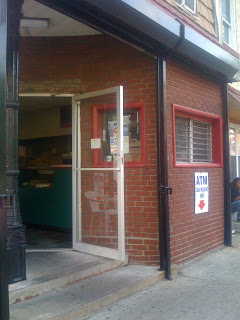A jack, and his trades, on a quest for some type of mastery.
In the interest of self-congratulation, and because (who knows?) maybe it’s better to mix some parody into one’s résumé:
Things I have done in the past, and will do again if you pay me.
Worked in subzero conditions for days on end.
You know how they say some things build character? Well, being cold is miserable, but I always remember it fondly.
Demolished a load bearing wall.
This shit is tricky. You gotta build a temporary wall to keep the load supported, and then you get out your sledgehammer and knock the old wall out. Extra points if you actually *lift* the load up beforehand, using a bottle jack or similar.
Organized my music collection with a shell script.
Most practical use of my years on Linux. I had all these old Napster-era files on my hard drive and had (obsessively) named them all in a particular naming sequence (“Artist Name — Album Name — Track Number — Track Name”, if you must know). But a lot of them were just in the root of my “Music” directory, and I wanted them to be sorted into a directory structure that only halfway existed. So I wrote this script that identified all of the relevant fields in the filename and searched to see if the necessary file path existed, and then created it if it didn’t and moved the files into the right path. I was an amateur and spent like a weekend on the script. It executed (and probably sorted through a couple dozen gigabytes of music) in like five seconds.
(Shamelessly) done my own photography.
Hey, I’ve got nothing but love for your selfies. I spent *years* with a tripod and a remote trigger. About the best investment I ever made was a muslin backdrop, and I’ll curate & color correct the *hell* out of some soft-focus product shots.
Been to China.
Incredibly (and to no particular credit to myself), this is maybe my most marketable achievement in the past three years. I visited like ten factories while I was there, and was wooed by some number of dozens of potential suppliers of machined/extruded/moulded parts. I was apparently also charming enough to get a local girl to show me around working-class Pudong (in a non-romantic way). I was out of my element, and accidentally brilliant.
Spliced both three-strand twist *and* double braid rope.
Three strand is easy once you get the hang of it. Double braid rope comes in all varieties, and you really need to know what you’re working with to get it right.
Vetted SMT assembly shops.
Not that I knew the first thing about how SMT is done. But supplier vetting is more about understanding the people you’re talking to than it is about understanding the processes they’re performing.
Finished The Power Broker.
You want commitment? You got it.
Attended Edward Tufte’s one-day course.
Edward Tufte has a vanity gallery in Chelsea, and he seems pretty good at getting a couple dozen suckers to plunk down $380 to listen to him rap about information design for a few hours. Which, if you count my ability to gush about John Snow and claim expertise on the ways in which PowerPoint distorts intellectual discourse… Well, let’s just say it was money well spent.
Attended The Landmark Forum.
You have no idea how many things occur to me that.
Unlocked basically all the privacy settings on my Facebook page.
If you’re scared of hiring me because — gasp — there are pictures on the internet of me drinking beer with friends, well, move right along.
Had a letter to the editor published.
And let me tell you, there are some key phrases I wish I had reworded beforehand.
Been the president of a nonprofit.
You gotta watch out — speak up at the first meeting, and they just might call on you.
Derived the syntactical structure of sentences like “The man that the girl that is nice met is cool.”
If you don’t think that’s grammatical, well, check this out.
Made coq au vin.
Though I must say, chicken bones in my stew is a little weird.
Been at the helm, at the start of a race, in a 38' sailboat, when we crashed into the committee boat.
They were parked; we were probably doing 7-8 knots. Not my brightest moment. Everyone was okay, and after that was clear I accepted my lapse in judgment and got back at the helm.
Told a supplier that we were working on developing in-house capabilities in his field.
I had no idea how to splice rubber extrusion, but I pitched the idea to my bosses and eventually we figured it out. The supplier was really cool about it, too — we paid him a retainer and he taught us what he knew (which wasn’t very much) about the process. Rubber transfer moulding is really simple, but — even with our supplier’s support and advice — we struggled with the details for months. I still don’t understand precisely what is happening chemically as rubber cures, but in the end I guess that wasn’t really relevant.
Fired a subcontractor.
Guy was an asshole. I made a key mistake, though, and didn’t limit my list of reasons to “you’re an asshole.” If you’ve got that card, play it — and leave the rest to yourself.
Let my boss convince me to let an employee go.
This was a huge mistake. Ultimately he was right, but his lack of trust in my judgment was a harbinger of bad things to come.
Spent way too long sharpening a chisel.
But man, sharpening stuff on a Japanese style waterstone is so cool.
Stayed at home and written silly things for the internet.
:)
With apologies to Mike Arauz and his excellent post, Square-shaped is the new T-shaped.




